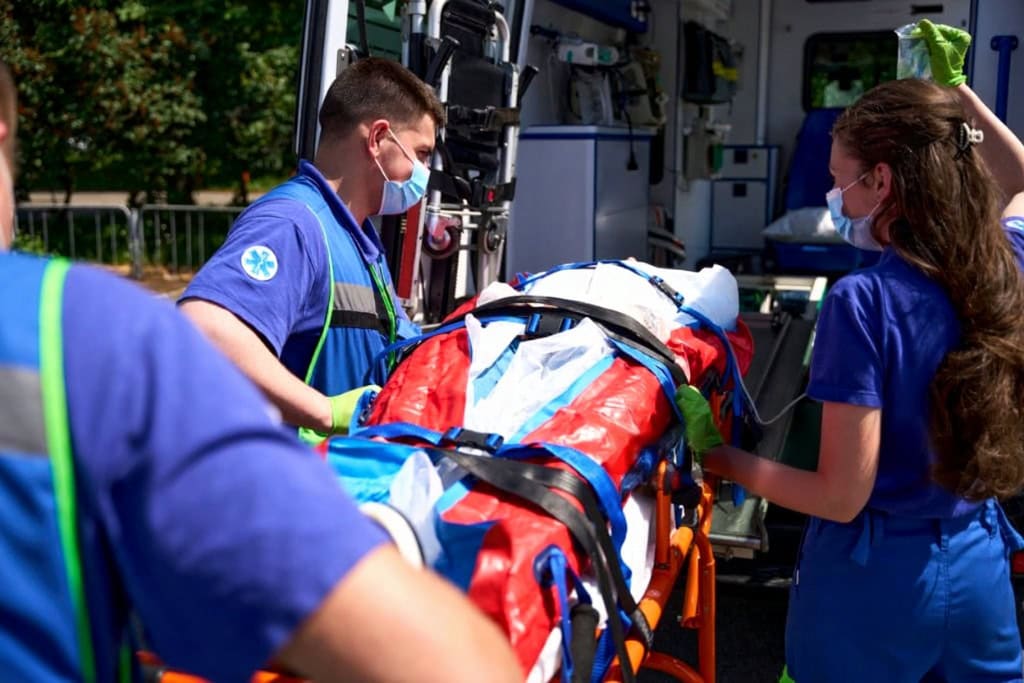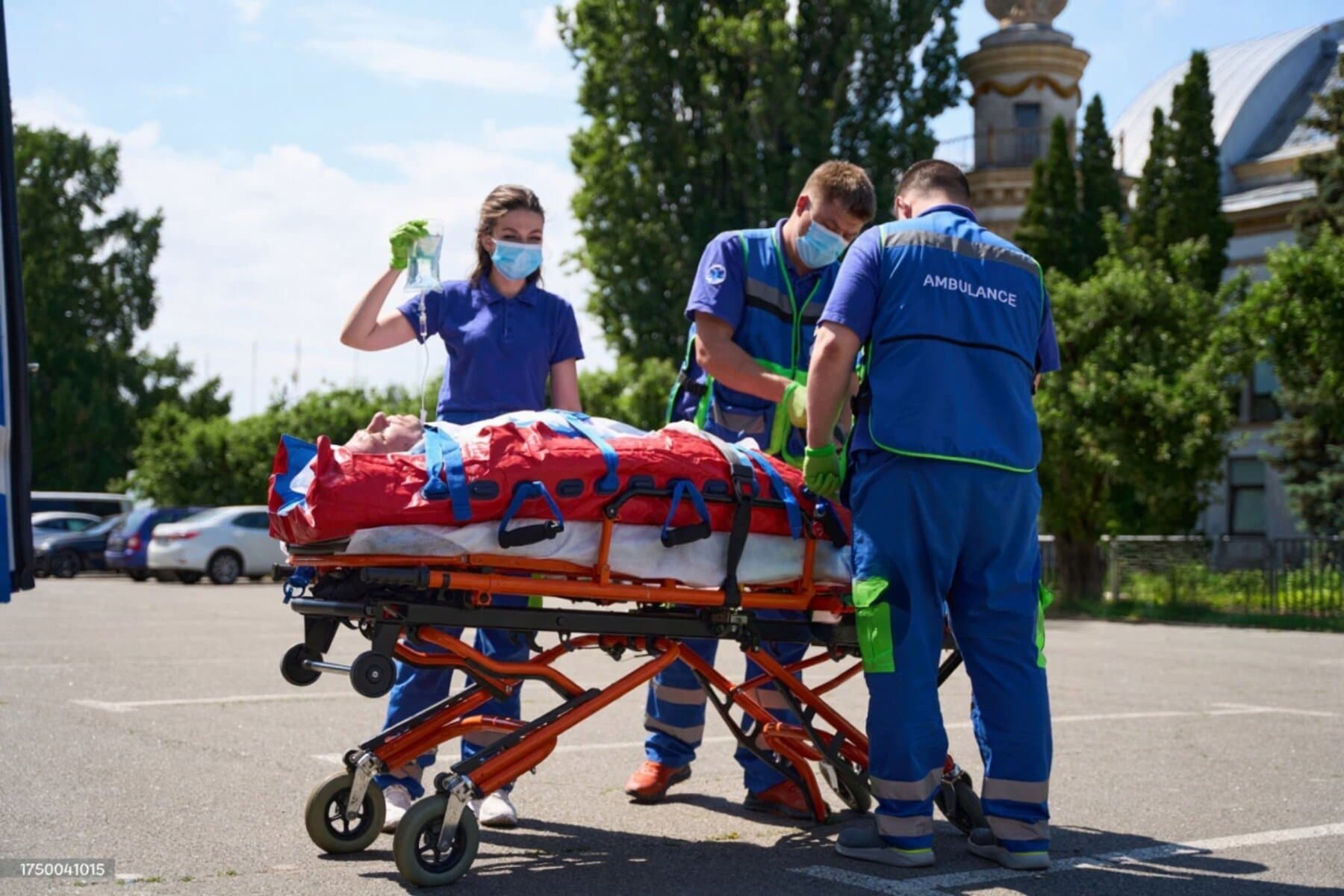When every second counts in an emergency, having the right equipment at hand—and knowing how to use it—can mean the difference between life and death. Among the many tools that first responders rely on, the vacuum stretcher stands out as one of the most effective devices for immobilizing and transporting patients with suspected fractures or spinal injuries.
If you’re part of a rescue team, hospital staff, or disaster relief crew, you’ve likely seen this stretcher in action. It looks simple: a padded mattress filled with tiny beads that molds around a patient once the air is removed. But in practice, correct usage requires attention to detail. In this guide, we’ll walk through the most important points to consider when using a vacuum stretcher so you can transport patients safely and with confidence.

Point 1: Positioning Matters More Than You Think
The very first step is always the most critical: patient positioning. Before you seal and secure the stretcher, the patient should be lying flat with the spine aligned. Even a slight twist or bend can worsen an existing injury. Ideally, at least two rescuers should coordinate this step—one stabilizing the head and neck, while others carefully adjust the body.
According to the American College of Emergency Physicians, improper spinal alignment during patient transfer can significantly increase the risk of secondary injury.
Pro tip: Always double-check alignment before sealing. Think of it as “measuring twice, cutting once.”
Point 2: Achieving Secure Immobilization
Once the patient is in place, it’s time to remove the air. This step transforms the soft stretcher into a rigid support structure. But don’t stop at just pumping out air until it feels firm. Test it.
- Press gently along the edges to check for soft spots.
- Lift the stretcher a few inches and see if the patient shifts.
- Confirm that the stretcher supports the spine, hips, and limbs evenly.
A properly set vacuum stretcher should feel supportive without being rock-hard. Too rigid and it may cause discomfort or pressure points. Too soft and the patient risks movement during transport.

Point 3: Adapting to Environment and Terrain
Rescues don’t happen in clean, flat hallways. They happen on rocky terrain, snow, wet roads, and sometimes in extreme temperatures. Vacuum stretchers are versatile, but their performance can be affected by environmental factors.
- Cold conditions: Materials can stiffen, making molding less effective.
- Hot conditions: Prolonged sun exposure may affect seals and valves.
- Uneven surfaces: Always secure straps to prevent patient shifting during lifts.
Before deployment, confirm that your stretcher’s specifications support the environment. For example, some models are rated for use between -20°C to 100°C, while others are less tolerant.
Point 4: Pairing with Other Rescue Devices
A vacuum stretcher is rarely used alone in critical trauma care. For maximum safety:
- Cervical collars: Keep the neck immobilized before the stretcher is applied.
- Spine boards: Sometimes used as an initial transfer platform before shifting into a vacuum stretcher.
- Head immobilizers: Can be combined with vacuum stretchers for complete stabilization.
A clinical trial published in PubMed compared vacuum mattresses with spine boards and found improved patient comfort without compromising immobilization effectiveness.
Compatibility matters here. Using products with international certifications such as ISO 13485, CE, and FDA ensures your devices work seamlessly together. For an in-depth breakdown of stretcher and splint compatibility, see our full guide: Vacuum Stretcher and Splints: Uses & Specs Guide.
Point 5: Cleaning and Maintenance Protocols
Rescue equipment isn’t just about what happens in the field. After every use, your stretcher needs to be ready for the next emergency. Because vacuum stretchers often come into contact with bodily fluids, proper cleaning is non-negotiable.
- Disinfect immediately: Use solutions recommended by the manufacturer to prevent material damage.
- Check seams and valves: Look for leaks, cracks, or wear.
- Store properly: Keep in a cool, dry environment away from sharp objects that could puncture the outer material.
Routine maintenance extends product lifespan and guarantees reliable performance when it matters most.
Point 6: Training: The Hidden Success Factor
Even the best equipment fails if the team using it isn’t prepared. Regular training ensures rescuers can deploy the vacuum stretcher smoothly, under pressure, and in different environments. Training should include:
- Mock drills with multiple rescuers
- Scenario-based training (e.g., confined spaces, road accidents, disaster zones)
- Cleaning and maintenance simulations
The National Association of EMS Physicians emphasizes spinal motion restriction as a key element of prehospital trauma care, and vacuum stretchers are a proven tool when used by trained teams.
Point 7: Why Certifications and Quality Matter
Not all stretchers are created equal. International rescue teams often require devices that meet ISO 13485, CE, and FDA standards. These certifications ensure:
- The stretcher has been tested under real-world conditions
- Materials are safe, durable, and resistant to chemicals
- Compatibility with other medical devices is verified
According to the FDA, certified medical devices must meet strict safety and quality standards before reaching the market. When evaluating suppliers, ask for proof of certification. It’s not just a paperwork formality—it’s patient safety on the line.

Conclusion: Respect the Details, Save Lives
A vacuum stretcher may look like a simple device, but in reality, it’s a highly specialized tool. Proper patient positioning, careful immobilization, environmental awareness, equipment compatibility, and routine maintenance all contribute to its effectiveness. Skipping steps or neglecting training undermines the very purpose of having advanced rescue equipment.
For more detailed specifications and comparisons, explore our in-depth guide here: Vacuum Stretcher and Splints: Uses & Specs Guide.
And to browse our full range of certified rescue equipment, visit us at Jiekang Rescue. We’ve been manufacturing stretchers and emergency gear for over a decade, serving rescue teams, hospitals, and government agencies across more than 45 countries.



